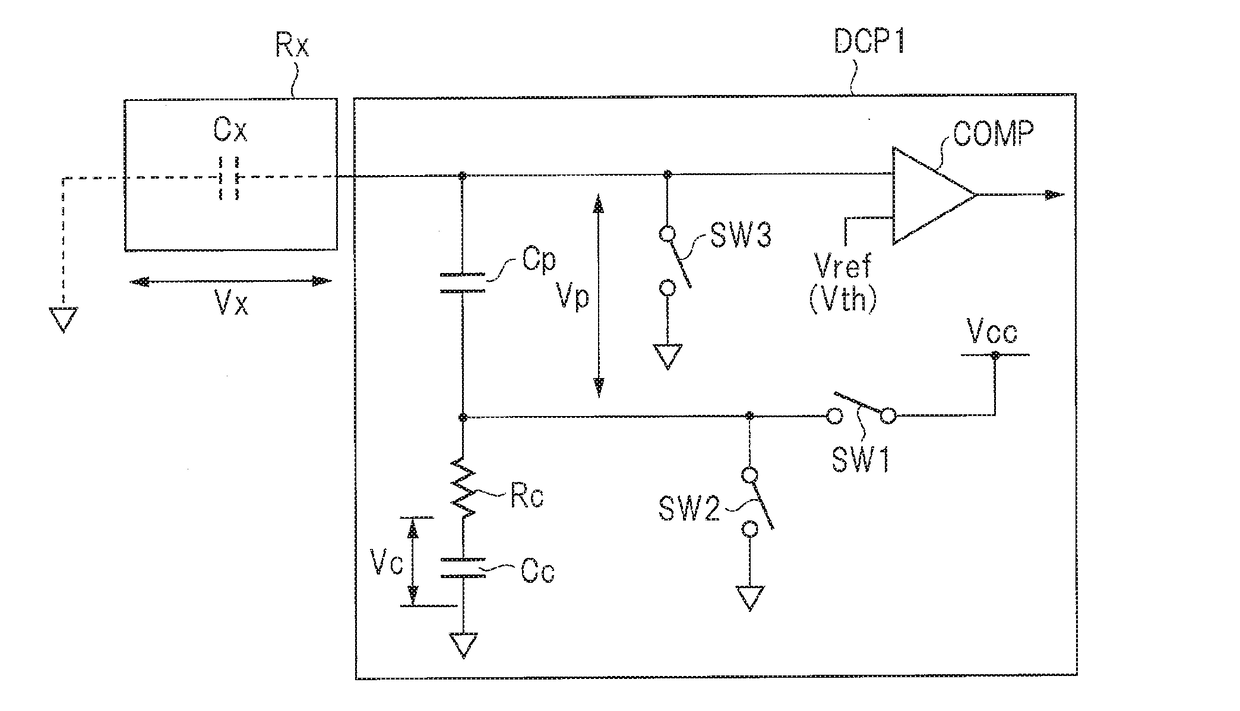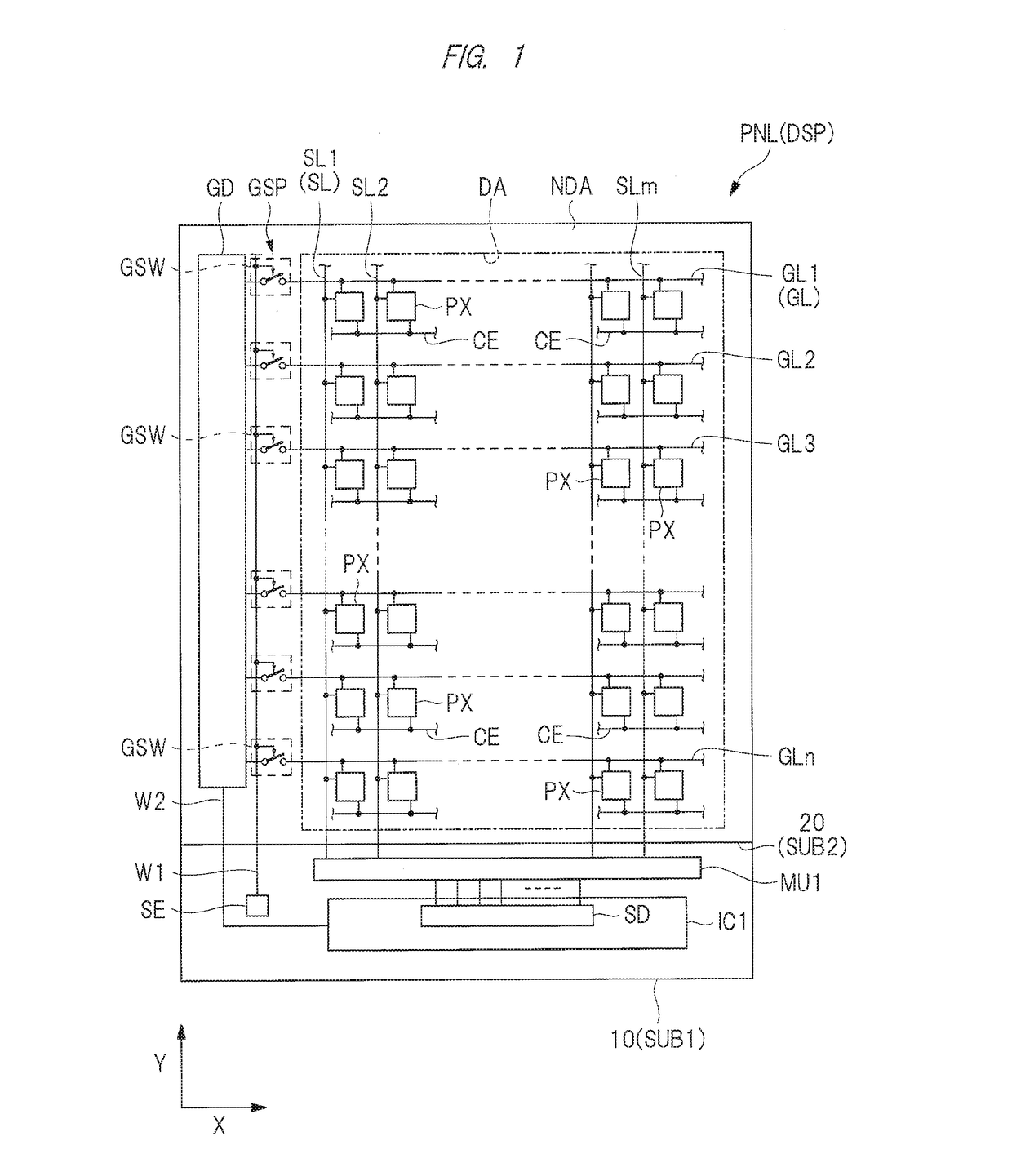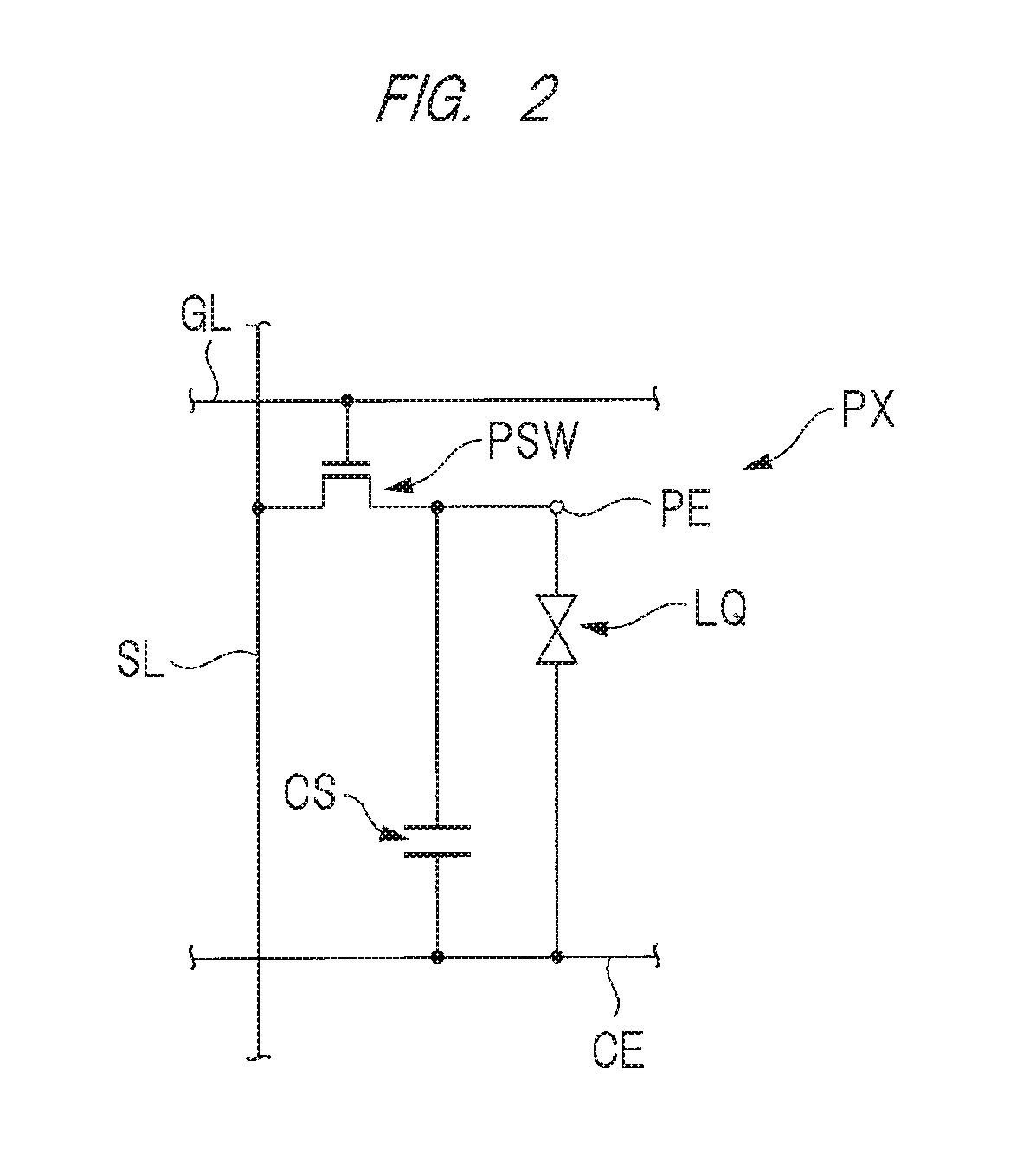Display device and input device
a display device and input device technology, applied in the direction of input/output to shift register memories, instruments, computing, etc., can solve the problems of long time required for the sensing process, power consumption increase, and sensing error, so as to reduce power consumption, prevent or suppress the occurrence of sensing errors, and shorten the time required
- Summary
- Abstract
- Description
- Claims
- Application Information
AI Technical Summary
Benefits of technology
Problems solved by technology
Method used
Image
Examples
first embodiment
[0044]First, an example where a touch panel as an input device is applied to an in-cell type display device with touch sensing function in which sensing electrodes of the input device are provided in a display panel of the display device and function as common electrodes of the display device will be described as the first embodiment. Herein, the display device according to the first embodiment is a liquid crystal display device. In addition, in the specification of this application, the input device is an input device which senses at least electrostatic capacitance which changes in accordance with the capacitance of an object which approaches or contacts an electrode. In this case, a self-capacitive method for sensing electrostatic capacitance of one electrode can be used as a method of sensing the electrostatic capacitance. Further, the in-cell type display device with touch sensing function means a display device with touch sensing function characterized in that driving electrode...
first modified example of first embodiment
[0195]Next, a first modified example of the first embodiment will be described. FIG. 24 is a view illustrating a touch sensing circuit of the first modified example of the display device according to the first embodiment. In FIG. 24, the plurality of sensing electrodes Rx included in each of the electrode groups RG1 and RG3 are hatched to show that the plurality of sensing electrodes Rx included in each of the electrode groups RG1 and RG3 are selected in the step S11.
[0196]In this first modified example, in the step S11, the sensing unit SE selects the electrode groups RG which are not adjacent to each other by selecting every other electrode group RG or every few electrode groups RG as the plurality of sensing process electrode groups, and selects the plurality of sensing electrodes Rx included in each of the plurality of selected sensing process electrode groups as the plurality of sensing process electrodes. Then, an approach or a contact of an object is sensed by collectively se...
second modified example of first embodiment
[0209]Next, the second modified example of the first embodiment will be described. FIG. 25 is a view illustrating a touch sensing circuit of the second modified example of the display device according to the first embodiment. In FIG. 25, part of the plurality of sensing electrodes Rx are hatched to show that the hatched sensing electrodes Rx are selected among the plurality of sensing electrodes Rx in the step S11.
[0210]In the second modified example, in the step S11, the sensing unit SE selects the sensing electrodes Rx which are not adjacent to each other by selecting every other sensing electrode Rx or every few sensing electrodes Rx in any of the X axis direction and the Y axis direction as the plurality of sensing process electrodes. Then, an approach or a contact of an object is sensed by collectively sensing the change in the electrostatic capacitance of each of the plurality of selected sensing process electrodes. Namely, also in the second modified example, the sensing unit...
PUM
 Login to View More
Login to View More Abstract
Description
Claims
Application Information
 Login to View More
Login to View More - R&D
- Intellectual Property
- Life Sciences
- Materials
- Tech Scout
- Unparalleled Data Quality
- Higher Quality Content
- 60% Fewer Hallucinations
Browse by: Latest US Patents, China's latest patents, Technical Efficacy Thesaurus, Application Domain, Technology Topic, Popular Technical Reports.
© 2025 PatSnap. All rights reserved.Legal|Privacy policy|Modern Slavery Act Transparency Statement|Sitemap|About US| Contact US: help@patsnap.com



